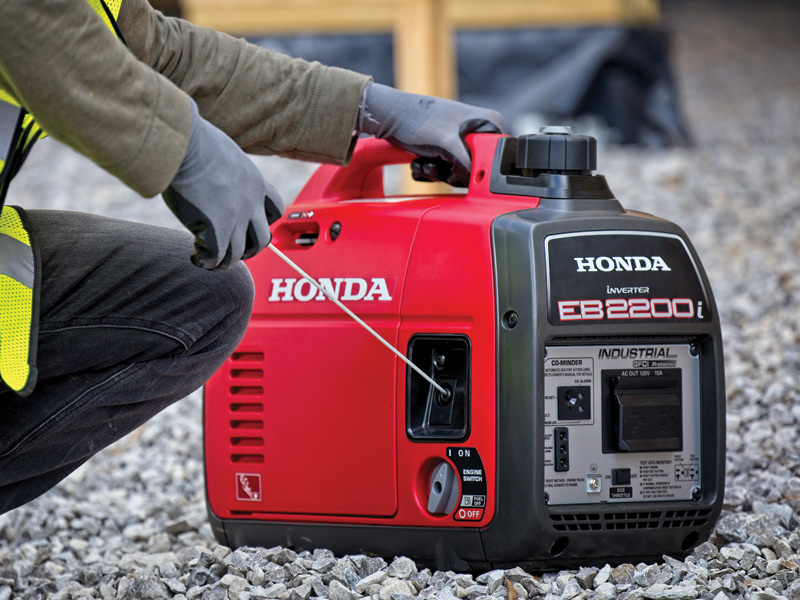Generator Operation
General operation tips
-
Always read your owner's manual before operating
your generator.
While we provide general tips here, it's important that you are familiar with the operation for your specific model before getting started.

- Always run your generator outside. Close any doors and windows.
Like all products powered by gasoline engines, Honda generators produce carbon monoxide. Protect yourself and others by only running the generator outdoors and well away from the home. Keep doors and windows closed.
- Give the generator plenty of space.
Leave at least three feet of space around the top and sides of the generator. Do not enclose the generator in a box or other casing. Proper ventilation is vital to its use and your safety.
- Keep the generator dry.
Do not use the generator in wet conditions, such as rain or snow, or near a pool or sprinkler system.
- Place the generator on a firm, level surface.
- Run your generator at least once a month.
Running, or exercising, your generator regularly helps to insure it will start when you really need it. It lubricates the engine by circulating oil, runs fresh gas through the carburetor, and works to recharge the battery. This keeps the generator ready to go when the power goes out.
Fuel
- Use unleaded gasoline with a pump octane rating of 86 or higher.
Honda engines are engineered and designed to run on unleaded fuel. This will reduce deposit build up on valves, spark arrestor, muffler and spark plugs.
The fuel can contain up to 10% ethanol by volume. A blend of 15% of ethanol (E15) or greater can damage engine components and is not covered under warranty.
-
Never use stale or contaminated gasoline or an oil/gas mixture.
-
Avoid getting dirt or water in the fuel tank.
-
Be sure to refuel when the engine is off and the generator is in a well-ventilated area.
Gasoline is extremely flammable and is explosive under certain conditions. Do not over fill, and make sure that any spilled fuel has been wiped off before starting the generator. If the engine has been running, allow it to cool before refueling.
- Store your generator in a well-ventilated area.
The fuel tank cap vents the tank. Because gasoline fumes can collect and ignite, adequate ventilation is a must. For example, don't store the generator below the deck of a boat.
To start your generator:
- Review your owner's manual to ensure familiarity with your generator's controls and operation.
- Move the generator outside.
- Check the fuel level and add more fuel if necessary.
- Check the oil level and add oil if necessary.
- Check the air filter and clean if necessary.
- Turn the circuit breaker off.
- Turn the fuel valve on.
- Start the generator.
- Allow the generator the warm up for a few moments before turning the circuit breaker on.
- Connect the appliances or the transfer switch if applicable.
To stop your generator:
- Turn the circuit breaker off.
- Turn the engine switch off.
- Turn the fuel valve off.
Transporting and storing your generator
-
Turn the fuel valve OFF.
If left on, gasoline may get into the engine crankcase and dilute the engine oil. This reduces the lubrication properties of the oil and could cause severe engine damage.
- Allow the generator to cool for 15 minutes before transporting or storing it.
- Always store the generator upright.
-
If you are going to store your generator for more then 2 months:
- Drain the fuel from the carburetor float bowl.
- Drain the fuel from the sediment cup.
- Add the correct proportion of fuel conditioner to the tank and top it off.








